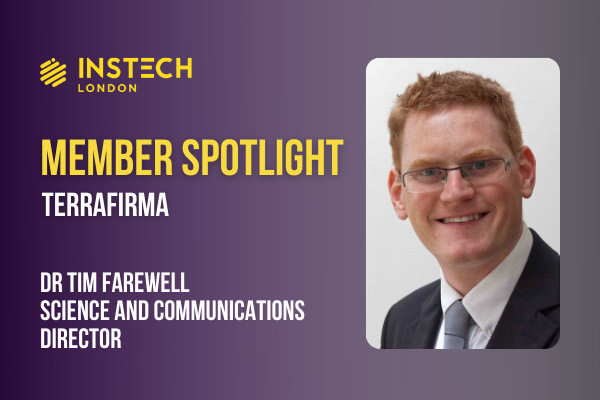Ali Smedley caught up with Dr Tim Farewell after he spoke at our recent live event Climate Change Risks and Opportunities Today. Tim discusses Terrafirma’s product offerings, how they incorporate climate change projections and the importance of increased education around geophysical hazards.
What problem is Terrafirma trying to solve?
We believe that insurers shouldn’t have to be geoscientists to understand ground hazards and protect themselves from these changing risks. Our team of geologists, engineers and soil scientists combine complex spatial and climate data to create hazard and risk models. We aim to make these simple so that anyone can identify and minimise the risks properties face from the ground.
What does Terrafirma offer to insurers?
We offer our National Ground Risk Model (NGRM) product, which covers the four main ground hazards to property in the United Kingdom (UK). This includes subsidence, which occurs when soil shrinks as moisture conditions change. Subsidence is the most costly geophysical hazard to property. Terrafirma’s model also evaluates other types of ground movement such as landslides and whether there are old mines that houses could fall into. We also cover coastal erosion… think houses falling into the sea.
For various future climate change scenarios, Terrafirma has also developed ground risk projections for subsidence and coastal erosion via our NGRM: Climate product. This enables companies to see how risk will change over the coming decades.
When insurers use your products, what is the output they receive?
A hazard score is provided for each ground risk for each property. We can customise the score based on an insurer’s predefined risk appetite. We alert them to which properties are acceptable to them based on this. In addition, we can provide a view of how risks are going to change in the future as a result of climate change. For this solution insurers are given a series of scores based on the risk, emissions scenario and timeframe.
How is climate change incorporated into Terrafirma’s model for subsidence?
There are two key questions to ask when looking at the way climate change will impact subsidence. The first is whether the soil can shrink as it dries. Clay rich soils have a large volume when wet, and they lose water through evapotranspiration in spring or summer. This means that the soil shrinks and subsidence can occur. The second question is whether the summer will be hot and dry enough for the soils to actually dry out.
In our NGRM: Climate model, we predict future hazard risk based on the Met Office’s UKCP18 climate projections. We can, for example, see which new parts of the UK are likely to be exposed to ground hazards that were not previously at risk. Historically the southeast has been the most exposed to ground movement, but climate change is already causing northern parts of the country to experience more ground movement.
What third-party data sets does Terrafirma use?
We incorporate multiple data sets from third party providers to provide a more holistic view of geohazards. In addition to third party data, we also use our own data sets that we have created – in the early days of Terrafirma we scoured old archives looking for mine plans and digitised the data. In total we use up to 40 different data sets depending on the hazard.
Is Terrafirma looking to move into any other areas in the future?
We would like to play a larger role in educating the lending, conveyancing and insurance space on the impacts climate change is having on ground hazards. Risk in the past is no longer equivalent to risk today, and it certainly isn’t equivalent to risk in the future.
We are also planning to expand our models to other regions; we’re currently focused on the UK but are in the early stages of building similar models for the US, Australia and Ireland.
Why did Terrafirma join InsTech London as a corporate member?
Although we have a lot of experience providing models to insurers, there are many companies Terrafirma still hasn’t worked with. It’s also great to get out of our science bubble.
What companies would you like to connect with?
Insurers, but also any company in the financial space that wants a better understanding of what ground risks are like now and how they are changing. I encourage them to reach out to me on LinkedIn with their number one question about ground hazards.
For more information on Terrafirma, go to terrafirmaidc.co.uk


